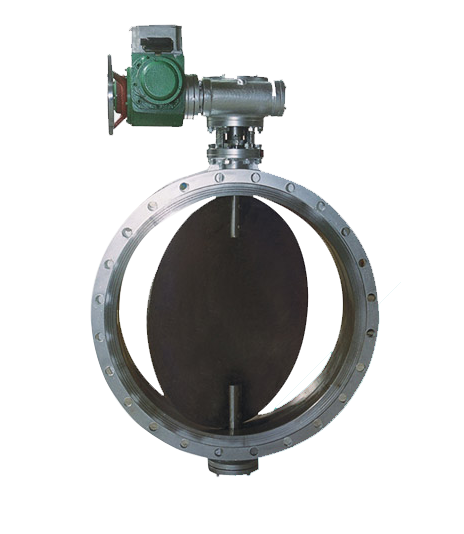Aeration butterfly valves are critical devices widely used in ventilation, air conditioning systems, flue gas emission, and dust removal systems. To ensure their long-term stable operation and to maximize their service life, regular maintenance and proper operation are essential.

1. Correct Installation
(1) Positioning: Ensure the aeration butterfly valve is installed in an appropriate location, avoiding exposure to high temperatures, corrosive media, and strong vibrations.
(2) Pipe Cleaning: Before installation, ensure the inside of the pipeline is clean and free of debris to prevent foreign objects from damaging the valve sealing surface.
(3) Proper Alignment: Ensure the valve is properly aligned with the pipeline to avoid stress concentration and sealing failure due to misalignment.
(4) Flange Connection: When connecting flanges, tighten bolts evenly to ensure uniform pressure on the sealing surface and avoid leakage.
2. Regular Maintenance and Upkeep
(1) Visual Inspection: Regularly inspect the valve's appearance to ensure the valve body is free of corrosion, cracks, or other damage, and that connection points are leak-free.
(2) Operation Testing: Regularly operate the valve to ensure that the opening and closing processes are smooth and that the operating torque is within normal limits.
(3) Lubrication Maintenance: Lubricate the valve stem and other moving parts to prevent wear due to friction. Use appropriate lubricants to avoid adverse effects on sealing materials.
(4) Cleaning Maintenance: Remove sediment and dirt from the valve body and pipeline to keep the interior clean and prevent blockages.
(5) Seal Replacement: Regularly check the condition of sealing components and promptly replace any aging or damaged seals to ensure proper sealing performance.
3. Correct Operating Method
(1) Slow Operation: Operate the valve slowly and evenly when opening or closing to avoid shocks and wear caused by rapid operation.
(2) Proper Adjustment: Avoid frequent adjustments of the valve position to minimize operating cycles and reduce wear on sealing components.
(3) Avoid Overpressure: Use the valve strictly within its design pressure range to prevent damage caused by overpressure operation.
(4) Prevent Foreign Matter Entry: Ensure the pipeline system is clean to prevent foreign matter from entering the valve, which can damage the sealing surface and valve disc.
4. Timely Handling of Faults
(1) Seal Failure: When seal failure is detected, promptly replace the sealing components to prevent further damage caused by leakage.
(2) Operation Inflexibility: If the operation is inflexible, check the lubrication of the valve stem and bearings, and lubricate or replace components as necessary.
(3) Corrosion: When corrosion is observed, clean the affected areas and take anti-corrosion measures. Replace damaged components if necessary.
5. Choose Appropriate Materials and Models
(1) Material Selection: Choose appropriate valve materials based on the characteristics of the medium to ensure the valve body and sealing components have sufficient corrosion resistance and abrasion resistance.
(2) Model Selection: Select the suitable valve model according to the working environment and operating conditions, ensuring that the valve's pressure and temperature ratings meet the requirements.
6. Develop Maintenance Plan
(1) Maintenance Interval: Develop a reasonable maintenance schedule based on the operating environment and conditions, and perform regular inspections and upkeep.
(2) Record Maintenance Activities: Document each maintenance and upkeep activity, including replaced components, operation test results, etc., to facilitate future maintenance.